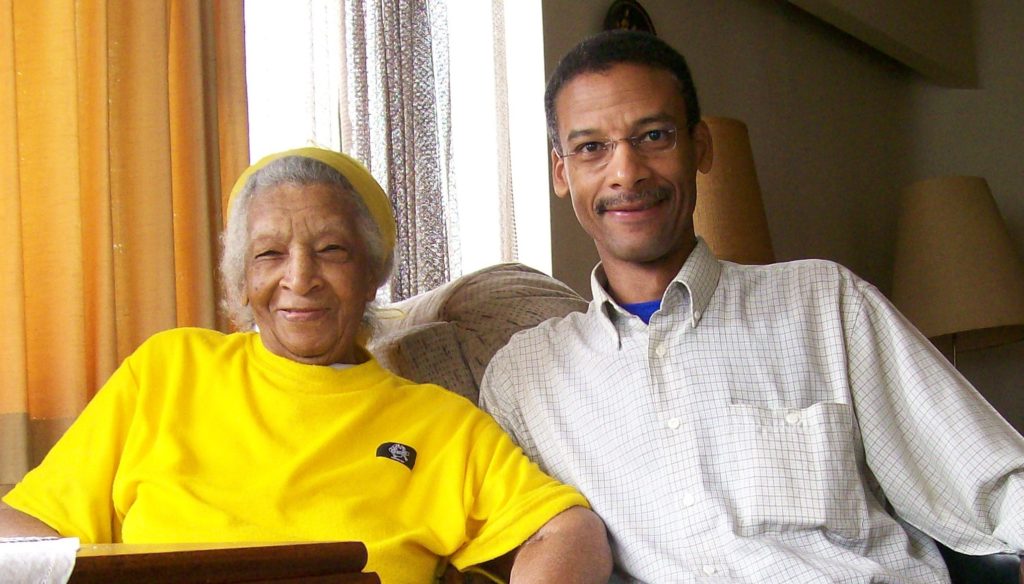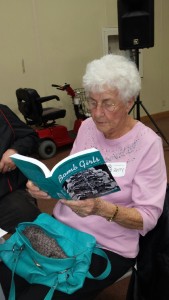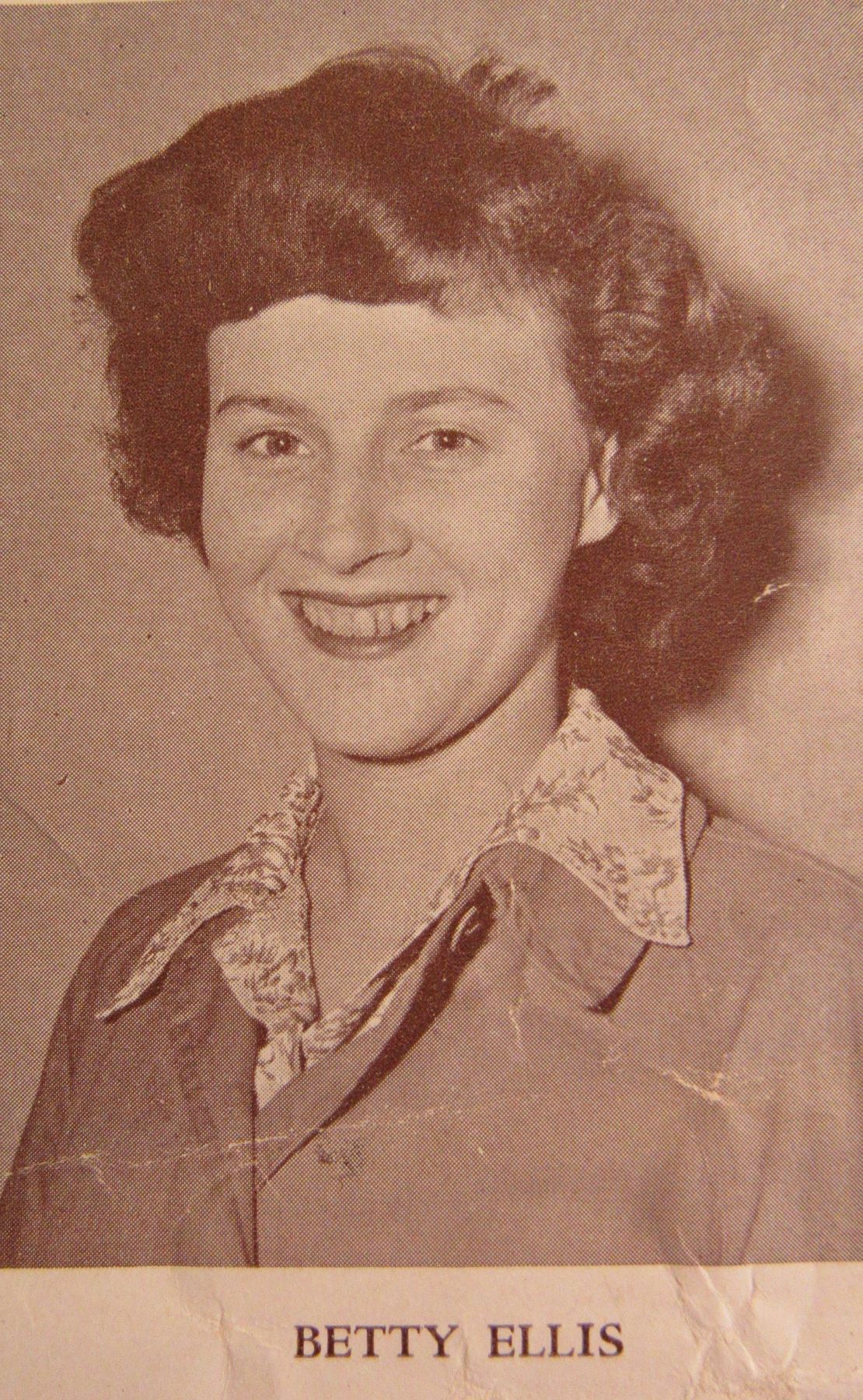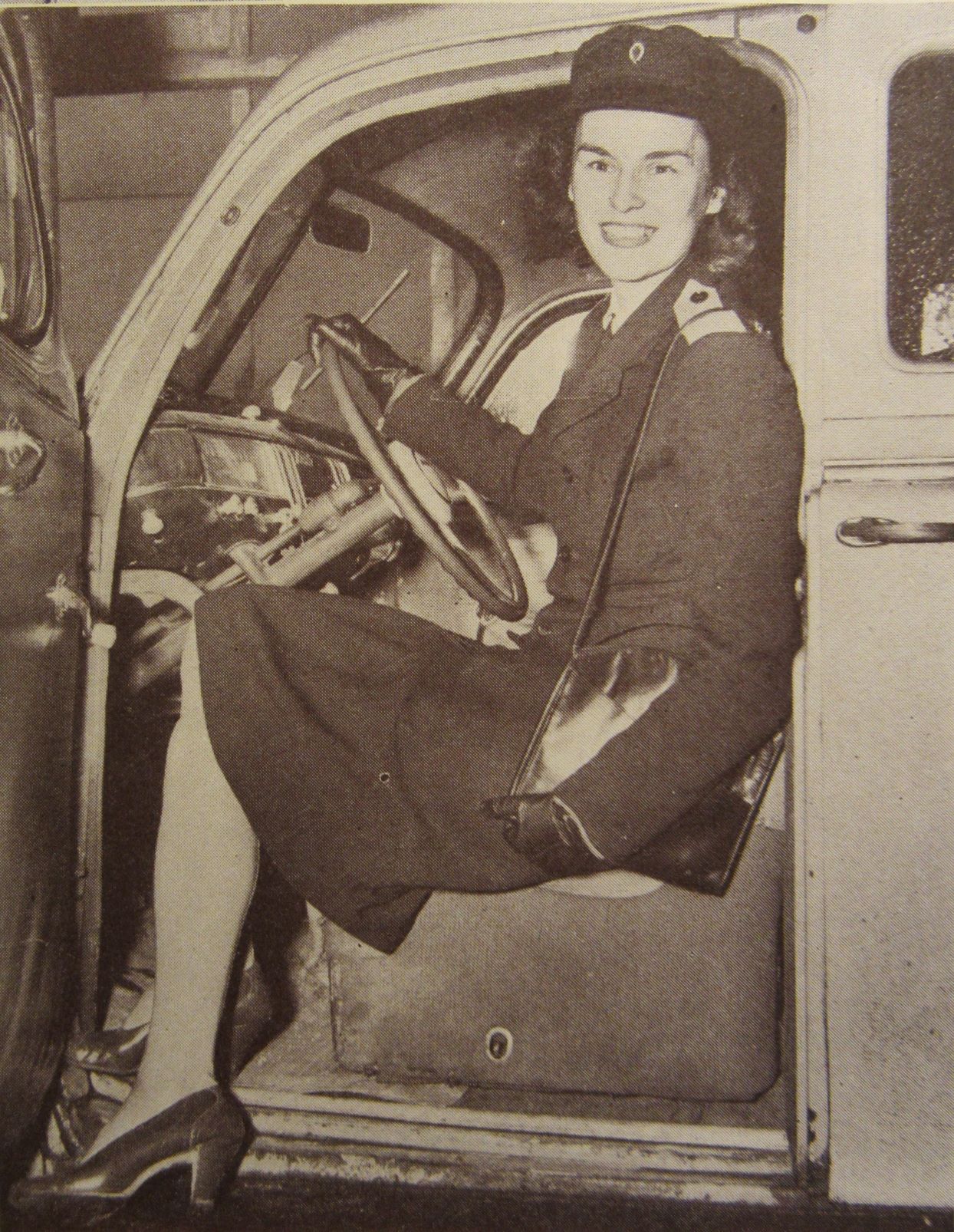Meet Canada’s Bomb Girls
It is historian and author Barbara Dickson’s great pleasure to share stories of Canadian bomb girls. Women from across this great nation left their mothers, fathers, sisters, and brothers to move to Toronto to fill munitions for the Allied Forces during the Second World War. Over 21,000 Canadians, predominantly women, worked at the top-secret GECO munitions plant located in Scarborough, Ontario and another 9,000 at the shell-filling plant in Pickering, Ontario. Thirty thousand faithful, courageous citizens did their bit for King and Country, bringing tenacity, courage, and hope to a beleaguered world during a dark time in human-kind’s history.
These brave women mostly have passed on, with only a small contingent remaining; their meagre numbers declining rapidly with the passage of time.
Enjoy learning about these brave women and their invaluable contribution made long ago so that we may live in freedom today.
There’s little doubt that these Canadians are truly unsung heroes of war.
Bomb Girl Anne Wilmot Parkin: “I Want to Work with Munitions”

Canadian Bomb Girl Anne Wilmot Parkin with Nephew Brian Roberts © Brian Roberts
Anne Wilmot was born in 1915 in Montreal, Quebec, shortly after her parents and two siblings moved from their homeland, Jamaica. When war broke out many of her friends and colleagues signed up for war work, either close to home at John Inglis, where guns were made, or in the far reaches of Scarborough, where a munitions plant was being built.
“No one knew anything about GECO,” Anne said. “GECO was really looking for people, and out of curiosity, I applied as a war worker, not a secretary.” Given Anne’s excellent secretarial skills she had acquired at Western Technical and Commercial School near High Park, management wanted Anne to work in administration. “They didn’t think I would want to work on the line,” she said, “but I wanted to work in war work, with the munitions.”
Anne worked on the High Explosives side of the plant, filling No. 119 fuses. She was aware of the strategy of the spacing between buildings. “There was enough space that if one shop blew up it wouldn’t affect other shops.” It was a sombre admission for a new employee. In fact, just two days after she started, during her one-week introduction period, there was an explosion in one of the shops. “No one was hurt,” Anne said, thankfully. Undeterred, Anne worked at GECO, faithfully filling 119’s until the war ended.
Anne worked with tetryl, a highly volatile yellow powder which had the ability to stain skin. As a young, black woman, the explosive powder turned Anne’s skin orange, not yellow, like those with fairer skin. “My fingernails turned orange,” she said, “and the bottoms of my feet and the palms of my hands. You had to be careful or you could get a horrific rash.”
To Anne, GECO was a big place, filled with dedicated people wanting to do their bit for the war. “There were nationalities of all kinds at GECO,” she said. She was accepted readily as a black woman and felt no discrimination.
After the war, Anne moved to Vancouver and met and married Al Parkin. “Anne was a selfless person caring more for another person instead of herself,” her nephew, Brian said. “If there was a place last in line Anne would be glad to take it. That was her nature.”
Anne Wilmot Parkin passed away in 2016 in British Columbia.
Bomb Girl Elizabeth Ellis Warner: Too Young to Fill Munitions

Canadian Bomb Girl Betty Warner Reading Bomb Girls: Trading Aprons for Ammo © 2015 Rick Beaulieu
Elizabeth Ellis was born in 1927 in her grandmother’s home on Broadview Avenue in Toronto. She was the oldest of four daughters born within four years and a child of the Great Depression. She left school at age sixteen to work to help support her family. She applied at GECO’s employment office on “the Danforth” and started her daily commute out to Scarborough in May 1943.
Betty was not old enough to fill munitions so she performed vital office work. She remembers feeling out of place. “I was so young,” she said. “Everyone was older, they were married, had children.”
Betty never realized that women were filling munitions at the plant. “I had no idea what they did in the workshops,” she said. She saw women with yellow hair and hands from working with tetryl, but had no idea what caused the alarming symptoms.
Betty participated in many extra-curricular activities offered at GECO. She played first base on one of GECO’s softball teams and sprained her ankle at an exhibition game held to support troops at an Army Camp. “I leapt up to catch a ball,” Betty said, “and fell into a hole.” A military doctor taped up her injury onsite, but when she returned to work, she visited GECO’s Medical Department where the nurses were shocked at the sight of the Army doctor’s “quick fix.”

Canadian Bomb Girl Elizabeth Ellis Warner – GECO Fusilier circa 1945 © Archives of Ontario
Betty wanted to donate blood to help men fighting oversea but she learned she was anemic when she visited GECO’s medical centre. Instead of taking her blood, GECO nurses instructed her to take iron pills and eat lots of lettuce and liver.
By March 1945, talk of the war ending was already on the lips of hopeful Canadians. Betty knew she would soon be looking for work. She left GECO that spring to work at Queen’s Park. About that time, she rekindled a romance with a handsome sailor, Victor Warner while he was home on a ten-day leave.. When he shipped out, they promised to write to each other. Elizabeth and Victor were married in the summer of 1948 and enjoyed over fifty-five years together before her beloved Victor died..
Today, Betty lives with her family in Keswick, Ontario.
Bomb Girl Carol LeCapplelain Knight: Yellow Canaries

Canadian Bomb Girl Carol LeCapplelain – GECO Inspector – Toronto Circa 1942 – Courtesy Carol LeCapplelain Knight
Carol LeCappelain, born in November 1921, first learned about GECO from a newspaper advertisement in her local paper, the North Bay Nugget. She was earning $12.00 a month. GECO offered her a starting salary of $22.00 per week. She eagerly made the move to Toronto.
Carol brought a unique job perspective to Canadian bomb girl stories as she worked as an inspector at the plant, responsible for ensuring filled munitions passed the Government of Canada’s high standards of quality — specifically those filled in Building No. 33, Shop G. As a government employee, she wore a navy turban to identify herself as an inspector. She escorted skids of ready fuses through the extensive aboveground walkway system to the proof yard where a representative sample of all filled munitions were deliberately exploded to test their accuracy and efficacy. Carol once rejected an entire skid of fuses — about 2,000 rounds — because she was concerned they didn’t measure up. “I didn’t want any soldiers killed due to a faulty fuse,” she said.
As a lark, Carol and her friends dyed their undergarments yellow to liven things up in GECO’s changerooms. Everything they wore was white: underwear, bras, socks, slacks, jackets. When the young women disrobed revealing their secret, hundreds of women in the change house enjoyed a good laugh. Staff dubbed Carol and her compatriots “yellow canaries.”

Canadian Bomb Girl Carol LeCappelain Knight with Barbara Dickson
After the war ended, Carol married and raised her dear family, settling in Scarborough. She passed away on New Year’s Day, 2014.
Bomb Girl Helen Gray Fraser: A Star is Born
Stories of Canadian bomb girls wouldn’t be complete without a movie star. By the time Helen Fraser joined GECO, she had lived most every girl’s dream. As a single young woman living in Medicine Hat, Alberta, Helen Gray’s life changed when scouts from Paramount Studios descended on the small Prairie town. Helen had no idea that a local theatre manager had given the men her photograph. She was soon on her way to California.

Canadian Bomb Girl Helen Gray Fraser – GECO Taxi Driver – Courtesy Archives of Ontario
Helen, starry-eyed, became a Hollywood beauty, signing a six-month contract with the film studio. She first appeared in a film, “Hollywood on Parade,” starring a group of beauty contest winners who visited several Hollywood nightspots. The film featured several big names in show business. Helen also starred in “Search for Beauty,” which was released a year later. When her contract ended, her career ended as well. “I was there six months,” she said, and while “it was lots of fun,” she returned home, married, and Canada entered the Second World War.
Helen moved east specifically to work at GECO. Her seven brothers, all but the youngest, fought overseas. One tragically was missing in action. Her husband served in the R.C.A.F. as a flight sergeant.
Helen contributed to the war effort through a unique occupation at the munitions factory. She drove employees and special guests around the plant in a company taxi manufactured from old auto parts. The GECO site sat on 346 acres of land and comprised over one hundred and seventy buildings. Getting around the factory took time, time high-ranking government officials and special guests didn’t have to spend. GECO’s most distinguished guests had the one-of-a-kind experience of being chauffeured around the facility by an authentic Canadian Hollywood starlet.
While Helen may have been a Hollywood star, her spirit truly shone in her contribution to her country.
Bomb Girl Dorothy Trotter: First Victim of the Second World War
Bomb girl Dorothy Trotter became one of the Second World War’s first victims when she and her one-year-old baby girl survived the sinking of S.S. Athenia on September 1, 1939, the very day Britain entered into a state of war with Germany. Scrambling into a lifeboat on the frigid, stormy North Atlantic, Dorcas clung to her first-born, not knowing if they would live through the night. With a firm resolve, they both survived the sinking, 112 people died in the disaster. The ship had been torpedoed by a German U-Boat.
Dorcas worked in the Textiles department where various paper and cloth fuse components were prepared. Dorcas placed her little girl in GECO’s war nursery, an early version of daycare. Dorcas paid thirty-five cents daily for the nursery service. Her husband served in the Canadian Army.
Dorcas lived in a beautiful home along the Rouge River in Scarborough. She hosted many summer get togethers to help lift the morale of her war-time colleagues.
To learn more about these incredible Canadians, head to Bomb Girls. Over 100 more stories of Canadian bomb girls will be featured in Dickson’s follow-on book to Bomb Girls: Trading Aprons for Ammo, currently entitled, Bomb Girls: United for Peace.
If you had a loved one who worked at the GECO plant, Dickson has recreated a partial GECO employee database — about 8,000 entries — with names and other information gathered from 84 issues of GECO’s employee newspaper, GECO Fusilier. She would be happy to search the database in the hope that your loved one is mentioned..
